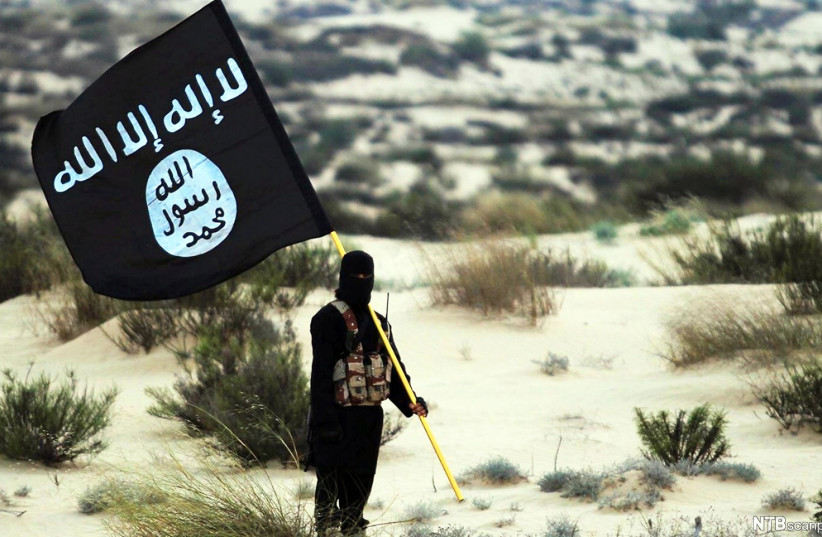US-backed Kurds strike deal with Syrian gov’t to clear ISIS camps
The new Syrian transitional government is seeking to find a way to deal with thousands of ISIS families who have been housed at camps in eastern Syria since ISIS was defeated in Syria in 2019. When ISIS was defeated in several villages near the Euphrates River in 2019, some of the terrorist group chose to surrender, and thousands of families of ISIS fighters ended up in the hands of the US-led Syrian Democratic Forces.
The thousands of families were sent to several camps and detention facilities in eastern Syria. These camps, called Al-Hol and Roj, probably had some 80,000 or more people in them at one time. By 2024, they had around 10,000 male members of ISIS as well as tens of thousands of family members, such as women and children. Al-Hol had an estimated 18,000 Iraqi citizens and 16,000 Syrian citizens, along with some 6,000 foreign ISIS supporters. There were another 3,000 estimated ISIS supporters in the Roj camp.
The camps have not been well funded, and what has happened is that the ISIS supporters generally keep to themselves and have a kind of internal police force that enforces their strict extremist norms. They also raise thousands of children in these conditions, essentially creating a new generation of potential extremists.
The US-led Coalition had no clear policy on what to do with these people. This is because most members of the Coalition were not involved in the Syria campaign. Many Western governments didn’t want their citizens back from Syria. At the same time, the Coalition didn’t want the SDF, which was backed and trained by the US, to release these dangerous extremists. There was no funding to de-radicalize the women and men either.
The Kurdish-led Democratic Autonomous Administration in North and East Syria (DAANES), which is the civilian authority in eastern Syria, therefore had to deal with these camps. They had special teams of SDF and security forces to secure the camps. However, it was impossible to deal with the families and change their behavior. The eastern Syria region, known by Kurds as Rojava, has no real financial resources. It is poor and isolated.

How it all changed
Things began to change when the new Syrian government took shape after the fall of Assad. Now that Western countries were engaged with Damascus, there was a possibility for movement.
This is because the former view of the SDF as merely a tactical, temporary, and transactional relationship could not be used to help the SDF integrate with the new Syrian government’s security forces and enable Damascus to assume responsibility for the ISIS detainees and families.
“The Kurdish authorities and the Syrian interim government have reached an agreement to empty the notorious al-Hol camp from Syrians and return them to their homes, a Kurdish official said on Monday,” the Kurdish media Rudaw reported on May 26. “The official Facebook page of the Kurdish-led Democratic Autonomous Administration in North and East Syria (DAANES), on Monday, cited Sheikhmous Ahmed, who oversees all internally displaced persons (IDP) and refugee camps in Rojava, as saying that a meeting was held between Rojava and Damascus officials earlier in the week. They agreed to ‘establish a joint mechanism for evacuating Syrian families from al-Hol camp and returning them to their original areas.’”
The report says the US-led Coalition has helped this along. This is not the first time the Coalition, which is a military mission, has helped with larger issues. The Coalition also helped with the SDF leader Mazlum Abdi meeting with Ahmed al-Sharaa in early March. Shara’a is the new Syrian president.
The US also appears to have helped with an agreement over the Tishreen dam between the SDF and Damascus. This comes as the US appears to be withdrawing some forces from Syria. It also comes as the US-backed Syrian Free Army, a group of fighters based at Tanf in southern Syria, has been playing a larger role at Al-Seen airbase east of Damascus.
The group says on social media that it is now part of the 70th Division of the new security forces of Damascus. All this is good news because it shows how the US has played a positive role in Syria. It came after US President Donald Trump met with Shara’a in Riyadh and after US Ambassador to Turkey Tom Barrack was named envoy to Syria.
Rudaw reports that “a delegation from the Syrian government visited al-Hol camp on Saturday, according to local media. The delegation consisted of ten people and was the first visit to the camp by the interim government.
They were also joined by representatives from the US-led global coalition against ISIS.” Moreover, the “Syrian interior ministry spokesperson told Rudaw on Saturday that as per the landmark agreement between Mazloum Abdi, chief of the Kurdish-led Syrian Democratic Forces (SDF), and Syria’s interim President Ahmed al-Sharaa in March, Damascus will assume the control of all areas in Rojava, including al-Hol camp.”
Meanwhile, on May 26, the Syrian government busted an ISIS cell near Damascus. ISIS continues to pose a threat. Kurdistan24 reported on a “wave” of attacks in eastern Syria. In addition, the authorities in eastern Syria want to see a decentralized administration as they move toward integrating with Damascus. In Damascus on May 26, the Syrian Minister of Foreign Affairs and Expatriates, Asaad al-Shaibani, met Monday with the Chief of the International Rescue Committee, David Miliband.





Comments are closed.